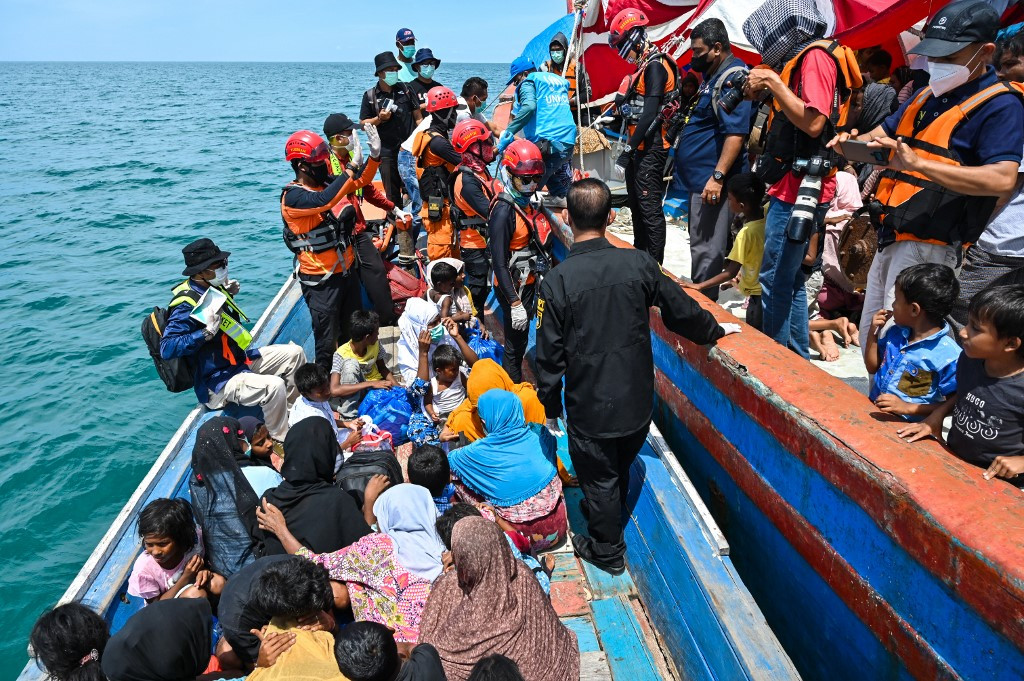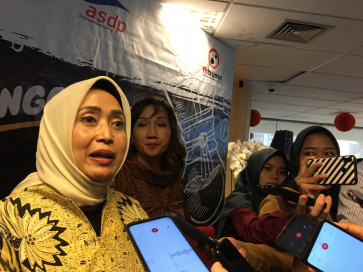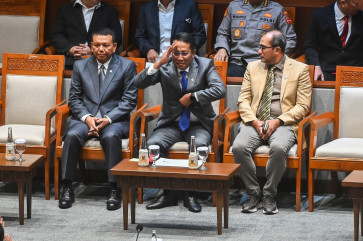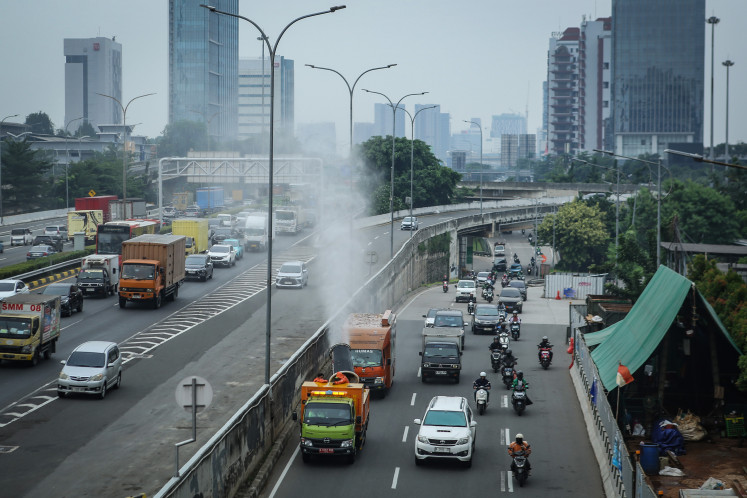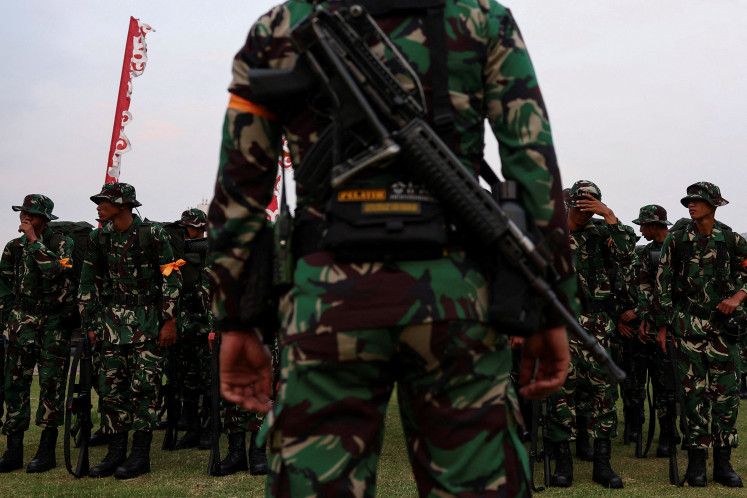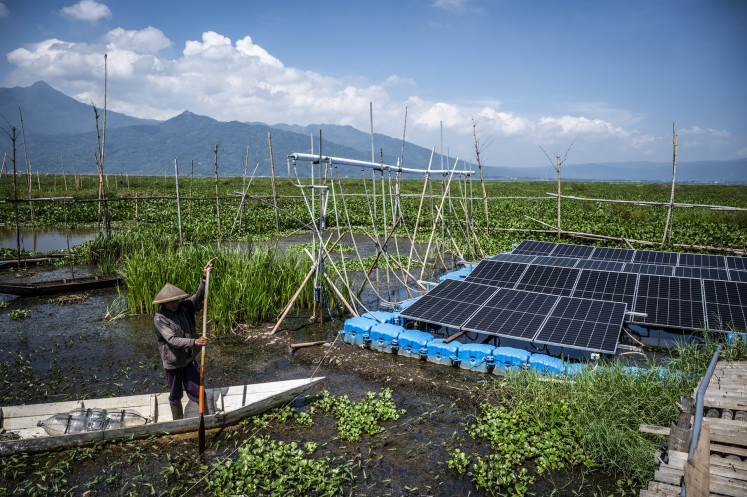Popular Reads
Top Results
Can't find what you're looking for?
View all search resultsPopular Reads
Top Results
Can't find what you're looking for?
View all search resultsASEAN and the Andaman Sea Crisis: Lessons still unlearned
Ten years on, little has changed. ASEAN still lacks a regional asylum framework or coherent protection mechanism.
Change text size
Gift Premium Articles
to Anyone
T
en years ago this May, Southeast Asia faced a defining moral and political test. The Andaman Sea crisis of 2015 saw over 30,000 Rohingya and Bangladeshi refugees adrift in overcrowded boats, desperate, starving and stateless.
Instead of compassion, they encountered closed ports pushed back into open waters by Governments of Thailand, Malaysia and Indonesia. They engaged in a deadly stand-off that left thousands stranded between borders. The region watched, immobilized by the weight of sovereignty and the doctrine of non-interference.
The crisis was no sudden shock. Human rights groups had already exposed the trafficking camps in Thailand’s southern jungles, ruthless operations that detained, tortured and extorted Rohingya refugees en route to Malaysia. Yet regional authorities remained passive until mass graves were unearthed and international scrutiny intensified. When traffickers began abandoning boats at sea, ASEAN’s collective inertia was laid bare.
By May 2015, more than 5,000 people were drifting off the coasts of Langkawi and Koh Lipe. But regional navies did not launch rescue operations. They patrolled to deter landings. ASEAN member states treated refugees not as victims of persecution, but as irregular migrants, problems to be managed, not people to be protected.
One act of defiance shifted the narrative. On 15 May, Acehnese fishermen rescued nearly 800 Rohingya from a sinking boat, defying government orders. Their spontaneous bravery pierced the political deadlock and reminded the region of its shared humanity. It was ordinary citizens, not governments, who led with moral clarity.
In response to public outrage, foreign ministers from Malaysia, Indonesia and Thailand met and agreed to provide temporary shelter, but only under strict conditions. Refugees would be hosted for one year, pending resettlement elsewhere. Thailand, a key transit country, offered no concrete commitments.
This reluctant compromise exposed the fractures within ASEAN’s political framework: one where solidarity remains conditional and compassion subordinated to sovereignty. Meanwhile, the discovery of trafficking graves along the Thai-Malaysian border further underscored the human cost of delay and denial.
ASEAN convened a series of high-level meetings in 2015 to coordinate a regional response to the unfolding crisis. The first, the Special Meeting on Irregular Migration in the Indian Ocean, held on 29 May in Bangkok, marked an urgent initial step. Participants outlined three core priorities: the immediate rescue and protection of those stranded at sea, the prevention of human smuggling, trafficking and irregular migration, and the development of long-term solutions by improving livelihoods in vulnerable communities.
Subsequently, the Emergency ASEAN Ministerial Meeting on Transnational Crime, held on 2 July in Kuala Lumpur, aimed to strengthen regional cooperation. It proposed the creation of a humanitarian trust fund and floated the idea of establishing a rapid-response task force. However, the discourse remained cautious and firmly state-centric, deliberately sidestepping any recognition of refugee rights as defined under international law.
This policy trajectory culminated in the Kuala Lumpur Declaration on Irregular Movement of Persons in Southeast Asia, adopted at the Tenth ASEAN Ministerial Meeting on Transnational Crime on 29 September 2015.
The declaration formally categorized people smuggling as a transnational crime and placed it under the mandate of the Senior Officials and Ministerial Meetings on Transnational Crime. While it reaffirmed plans for a trust fund and reiterated the task force proposal, it still fell short of addressing the refugee dimension of the crisis with either legal precision or moral clarity.
Ten years on, little has changed. ASEAN still lacks a regional asylum framework or coherent protection mechanism. The persecution of the Rohingya continues, the Myanmar crisis has intensified, and climate-induced displacement is on the rise.
Statelessness, ethnic persecution and systemic inequality are dismissed as internal matters rather than shared regional responsibilities. With no legal avenues for protection, refugees are forced to rely on smugglers.
ASEAN continues to conflate asylum seekers with irregular migrants, treating displacement as a security threat rather than a humanitarian and human rights issue.
As ASEAN prepares to adopt its Vision 2045 this year, it must confront a fundamental truth: the legitimacy of the regional bloc cannot rest solely on economic cooperation or political stability. It must also be grounded in a principled commitment to human dignity and protection.
ASEAN must urgently reframe its approach: moving beyond a narrow, state-centric lens that treats forced migration as a national security issue, toward one that recognizes displacement as a developmental and human rights imperative, one that intersects with poverty, inequality, environmental degradation, governance failures and conflict.
Forced migration is not merely a temporary disruption to national order, it is a structural and regional phenomenon that demands long-term, rights-based solutions. Refugees should be recognized as rights-holders, not burdens, as potential contributors, not threats. Access to education, healthcare and legal livelihoods must be guaranteed.
Practical tools such as humanitarian visas, regularization schemes and pathways to residency can turn vulnerability into resilience, for both refugees and host communities. Enabling refugees to work and study can address labor shortages, strengthen host economies and foster social cohesion. The future of regional prosperity depends not on exclusion, but on inclusion.
Moreover, ASEAN member states must stop hiding behind euphemisms. It must call refugees by name and acknowledge the persecution, war and injustice that force people to flee. Until then, it will continue to respond to crises with palliative measures, rather than addressing structural causes.
The haunting images of boats adrift and unmarked graves are not relics of a distant past, they are warnings of what lies ahead. Displacement is not a passing phenomenon. Whether driven by violence, persecution or climate collapse, people will continue to seek refuge. The only question is whether ASEAN will meet this challenge with humanity, or repeat the failures of the past.
The memory of the Andaman Sea crisis must serve not as a footnote in ASEAN’s history, but as a turning point. The region stands at another crossroads. The window for principled action is narrowing, but it is not yet closed.
---
The writer is executive director of ASEAN Parliamentarians for Human Rights (APHR).

